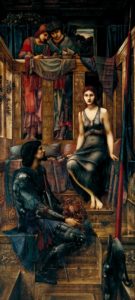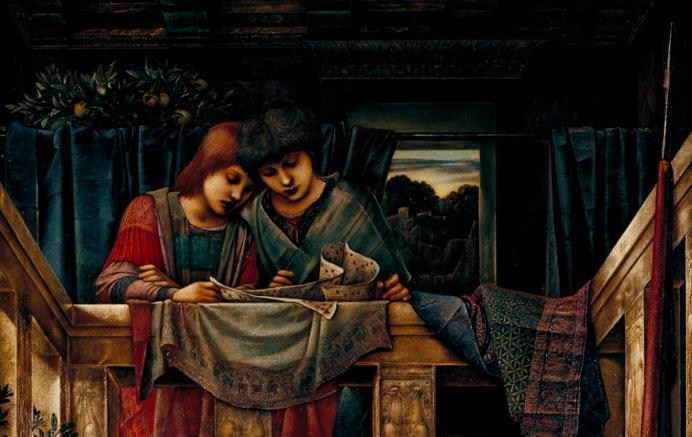08 November 2018
Edward Burne-Jones
Tate Britain (24 October 2018 – 24 February 2019).
Reviewed by William Morton

Edward Burne-Jones (1833-1898) was one of the leading Pre-Raphaelite artists. He abandoned a theology degree and took up art with encouragement from Rossetti. He was a close collaborator of William Morris and a friend of Swinburne. He made a number of trips to Italy to study Renaissance art and was a prolific draughtsman, designer and painter. He, like Morris, was fascinated by classical myths, Chaucer and the Le Morte d’Arthur legends and his paintings are largely devoted to subjects taken from such sources. He married Georgiana Macdonald (Kipling’s aunt) but had affairs, in particular with Maria Zambaco, an artist and model of Greek descent.
Burne-Jones was immensely successful. His worked chimed with the Victorian era and he was created a baronet and was commissioned by people such as Arthur Balfour, later Prime Minister. At the instigation of the Prince of Wales, his memorial service was held at Westminster Abbey, the first time an artist was so honoured.
However, like that of his contemporary, G F Watts, his work fell out of favour after his death. Although he has now been re-assessed, he remains a controversial figure and his subject matter is not perhaps in tune with modern taste. This exhibition has stimulated some savage assessments of his work – see, for example, Waldemar Januszczak of the Sunday Times, www.waldemar.tv, who takes great exception to what he calls ‘the droopy girls’ featured in his paintings.
One can understand where Januszczak is coming from and it has to be admitted that many of the women (and a few men) seem to share the same face. However, provided you are comfortable with the mythological/romantic background, there is much to enjoy in the paintings. Most of them are large, highly-coloured and definitely catch the eye. The so-called Exhibition Pictures in one room include well known works such as Love among the Ruins where the man and girl crouch with an air of desperation among fallen columns. In King Cophetua and the Beggar Maid our attention is drawn to the cleverly high-lighted figure of the maid. In Laus Veneris, a subject taken from a Swinburne poem, the central female figure is lost in thought while her maids gossip beside her. They successfully convey a sense of other-worldliness. Burne-Jones also gives value for money with a wealth of detail so that, for example, in Love Leading the Pilgrim the briars are filled with small birds. No corner is left without a vista or a corridor leading away. The paintings in The Briar Rose series, which are packed with detailed human figures, are flanked by rather charming simple panels of roses.
One room is devoted to portraits, which are interesting although perhaps not his finest work. One of his wife shows her looking a bit anxious with his children in the background. Katie Lewis is shown lying reading on a sofa reading. She is described as difficult and that can be seen in her face. There is a rather curious one of Paderewski, the Polish pianist and Prime Minister, who seems to be having a bad hair day.
Burne-Jones was a prolific designer, particularly for Morris & Co, and the exhibition includes stained glass and tapestries produced to his designs. His style suits tapestries and there are some fine examples on view such as that of the goddess Pomona.
He is not perhaps one of the truly great artists but merits attention and the exhibition is worth seeing. In a sense, he is always on show as so many churches have windows designed by him.


